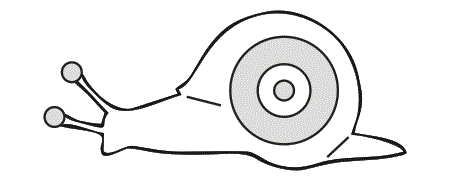Онлайн калькулятор для перевода единиц измерения скорости из километров в час (км/ч, km/h) в метры в секунду (м/с, m/s) и обратно.
Примеры работы конвертера:
1 км/ч равно 0.278 м/с;
18 км/ч = 5 м/с;
36 км/ч = 10 м/с;
54 км/ч = 15 м/с;
72 км/ч = 20 м/с;
90 км/ч = 25 м/с;
Выразить скорость км/ч в м/с:
3 км/ч = 0.833 м/с;
4 км/ч = 1.111 м/с;
4.5 км/ч = 1.25 м/с;
6 км/ч = 1.667 м/с;
9 км/ч = 2.5 м/с;
60 км/ч = 16.667 м/с;
100 км/ч = 27.778 м/с;
108 км/ч = 30 м/с;
180 км/ч = 50 м/с;
×
Пожалуйста напишите с чем связна такая низкая оценка:
×
Для установки калькулятора на iPhone – просто добавьте страницу
«На главный экран»

Для установки калькулятора на Android – просто добавьте страницу
«На главный экран»

Download Article
Download Article
Meters per second is a rate of speed, similar to miles per hour. Finding the speed is easy if you are given the distance in meters and the time in seconds. You can use the formula 
-
1
Set up the formula for speed. The formula is
.[1]
The distance refers to how far something or someone traveled, and the time refers to how long it took to travel that distance. -
2
Plug the total distance into the formula. This information should be given in meters. Sometimes, however, you might need to calculate the distance traveled using information provided in the problem, or you might need to convert another unit, such as miles, feet, or kilometers, into meters.
- For example, you might know that Henry drove his car for 48,000 meters. So, your formula will look like this:
.
Advertisement
- For example, you might know that Henry drove his car for 48,000 meters. So, your formula will look like this:
-
3
Plug the total time into the formula. Sometimes this information will be given; sometimes you need to calculate the time given a beginning and ending time. Find the difference between the beginning and ending time to find the total time it took to travel. In these instances, you will likely need to convert minutes traveled into seconds traveled by multiplying the number of minutes traveled by 60.[2]
-
4
Divide the distance by the time. This will give you the speed in meters per second.[3]
- For example,
.
- For example,
Advertisement
-
1
Set up the formula for speed. The formula is
.[4]
-
2
Acquire your distance-time graph. This should be presented to you in the form of a coordinate plane, and the graph should have at least one line plotted. The line represents the distance and time traveled by a single person or object. If the graph has multiple lines, each line represents a different person or object.
- The first endpoint of the line signifies when the person or object started moving. The second endpoint of the line signifies when the person or object stopped moving.
-
3
Interpret the x-axis and the y-axis of the graph. The x-axis is the horizontal axis, and it indicates the time spent travelling. The y-axis is the vertical axis, and it indicates the distance traveled.[5]
If the units of the graph are not listed in terms of meters per second, you will need to convert the units after you find the speed.- The steeper the line on a distance-time graph, the faster the speed.[6]
- A horizontal line indicates that there was no change in distance. This would indicate a speed of 0 meters per second.[7]
- The steeper the line on a distance-time graph, the faster the speed.[6]
-
4
Calculate the distance traveled by the person or object. To calculate the distance, find the appropriate line on the graph and note the point where the line ends. Find the y-coordinate of this point by moving your finger horizontally to the y-axis. This will show you the distance travelled.[8]
If the line does not start at the (0, 0) point, you need to find the distance by subtracting the y-values of the two endpoints of the line.- For example, if the line showing the distance and time traveled by Henry begins at (0, 0) and ends at the point (1,800, 48,000), the number of meters traveled is 48,000.
-
5
Calculate the time spent travelling by the person or object. To calculate the time, go back to the point where the line ends. Find the x-coordinate of this point by moving your finger vertically to the x-axis. This will show you the time spent traveling.[9]
- For example, if the line showing the distance and time traveled by Henry ends at the point (1,800, 48,000), the number of seconds traveled is 1,800.
-
6
Divide the distance by the time. Plug the two values into the formula and divide. This will give you the speed. If the units on the graph were listed in units other than meters per second, you will need to convert the units to find the speed in meters per second.[10]
- For example,
.
- For example,
Advertisement
-
1
Calculate the speed in miles per hour. Do this using the formula
.[11]
Restate the speed as a ratio of miles over 1 hour. -
2
Convert miles per hour to miles per minute. To do this set up fractions to cancel the units. To cancel units, you need to multiply two fractions that share one unit, but not the other. In order for the unit to cancel, it needs to be in the numerator of one fraction, and the denominator of the other fraction.[12]
Since there are 60 minutes in 1 hour, you would multiply the speed in miles per hour by the fraction.
- For example:
- For example:
-
3
Convert miles per minute to miles per second. Do this just as you did for the previous conversion. Multiply the two ratios to cancel units.[13]
There are 60 seconds in 1 minute, so your second fraction will be.
- For example:
- For example:
-
4
Convert miles per second to feet per second. There are 5,280 feet in a mile.[14]
Thus, you will multiply the ratio of miles per second by.
- For example:
- For example:
-
5
Convert feet per second to meters per seconds. There are 3.28084 feet in 1 meter.[15]
So, you will multiply the ratio of feet per second by.
- For example:
.
- For example:
-
6
Divide the numerator by the denominator. This will give you the speed in meters per second.[16]
- For example,
. So, Becky drove at a rate of 17.88 meters per second.
- For example,
Advertisement
Add New Question
-
Question
What is the speed of six meters in three minutes?
Since speed is the non-vectorial quantity of distance over time, it would be two meters per minute, given that six meters divided by three minutes equals two meters per minute.
-
Question
What is 3×10^8 meters per second?
It’s a good approximation of the speed of light. Use 299,792,458m/s if better accuracy is needed.
-
Question
I don’t get how to find m/s with a graph. Can you clarify?
A distance-time graph shows distance along the y-axis and time along the x-axis. The graph will have a line representing the distance and time traveled for one person or thing. The coordinates of the line’s endpoint will indicate the total distance traveled, and the total time traveled. Use the formula speed = distance/time to calculate the speed.
See more answers
Ask a Question
200 characters left
Include your email address to get a message when this question is answered.
Submit
Advertisement
Video
Velocity and speed are not the same. Velocity is a vector quantity that measures the rate an object changes position. Speed is a scalar quantity that measures how fast an object is moving.[17]
You do not calculate velocity and speed in the same way, so do not get the two measurements confused.
Thanks for submitting a tip for review!
Advertisement
About This Article
Article SummaryX
To calculate speed in metres per second, start by determining both the distance covered and the amount of time it took to cover that distance. If you need to calculate the time, subtract the starting time from the end time, taking care to express the amount of time as seconds instead of minutes or hours. Then, divide the distance travelled in metres by the time in seconds to get the speed. For tips on converting miles per hour to metres per second, keep reading.
Did this summary help you?
Thanks to all authors for creating a page that has been read 229,473 times.
Did this article help you?
Приборы для измерения скорости автомобилей измеряют скорость в километрах в час. В системе СИ принято измерять скорость в метрах в секунду. Разберем, как переводить скорости в систему СИ.
Примечания:
- Прибор, измеряющий скорость автомобиля, называется спидометром;
- Скорость — это один из параметров, описывающих движение. Движение может быть равномерным, или равнопеременным, или более сложным, например, колебательным.
Километры в час в метры в секунду
Рассмотрим два способа перевода единиц, один – с помощью формулы, второй – с помощью заранее подготовленного списка.
Способ 1 – с помощью формулы
[ large boxed{ v_{m} = v_{k} cdot frac{1000}{3600} }]
( displaystyle v_{k} left( frac{text{км}}{text{ч}} right) ) – скорость, выраженная в километрах в час;
( displaystyle v_{m} left( frac{text{м}}{c} right) ) – скорость, выраженная в метрах в секунду;
В одном километре помещается 1000 метров.
В одном часе содержится 3600 секунд.
Пример 1. Самолет движется со скоростью 420 километра в час. Переведем эту скорость в метры в секунду.
Решение:
[ large v_{m} = 420 cdot frac{1000}{3600} ]
Для удобства разложим числа на множители:
[ large v_{m} = 6 cdot 7 cdot 10 cdot frac{10}{6 cdot 6} ]
Произведем сокращения и получим точный ответ:
[ large v_{m} = 7 cdot 10 cdot frac{5}{3} = frac{350}{3} ]
В некоторых случаях точный ответ можно округлить:
Ответ:
[ displaystyle large v_{m} = 116{,}67 left( frac{text{м}}{c} right)]
Способ 2 – с помощью списка
Километры в час в метры в секунду можно достаточно быстро переводить в уме, применяя такой список:
[ large boxed{ begin{matrix} 3{,}6 left( frac{text{км}}{ч} right) = 1 left( frac{text{м}}{c} right) \ 7{,}2 left( frac{text{км}}{ч} right) = 2 left( frac{text{м}}{c} right) \ 10{,}8 left( frac{text{км}}{ч} right) = 3 left( frac{text{м}}{c} right) \ 14{,}4 left( frac{text{км}}{ч} right) = 4 left( frac{text{м}}{c} right) end{matrix} } ]
[ large boxed{ begin{matrix} 18 left( frac{text{км}}{ч} right) = 5 left( frac{text{м}}{c} right) \ 36 left( frac{text{км}}{ч} right) = 10 left( frac{text{м}}{c} right) \ 54 left( frac{text{км}}{ч} right) = 15 left( frac{text{м}}{c} right) \ 72 left( frac{text{км}}{ч} right) = 20 left( frac{text{м}}{c} right) end{matrix} } ]
Пример 2. Автомобиль движется по трассе со скоростью 108 километров в час. Переведем эту скорость в метры в секунду.
Решение:
108 км/ч = 72 км/ч + 36 км/ч = 20 м/с + 10 м/с
Ответ:
108 км/ч = 30 м/с
Переводим метры в секунду обратно в километры в час
Иногда возникает необходимость перевести скорость из метров в секунду в километры в час. Чтобы проделать это, используем такую формулу:
[ large boxed{ v_{m} cdot frac{3600}{1000} = v_{k} }]
Скорости более медленных объектов
Скорость движения медленных объектов, например, некоторых живых существ – улиток, измеряется в сантиметрах в минуту. Перевести такие единицы в систему СИ также, достаточно легко.
[ large boxed{ v_{m} = v_{s} cdot frac{0,01}{60} }]
( displaystyle v_{s} left( frac{text{км}}{text{ч}} right) ) – скорость, выраженная в сантиметрах в минуту;
( displaystyle v_{m} left( frac{text{м}}{c} right) ) – скорость, выраженная в метрах в секунду;
В одном метре помещается 100 сантиметров. А 1 сантиметр – это 0,01 метра.
В одной минуте содержится 60 секунд.
Пример 3. Улитка перемещается со скоростью 6 сантиметров в минуту. Переведем эту скорость в метры в секунду.
Решение:
[ large v_{m} = 6 cdot frac{0,01}{60} ]
Раскладываем числа на множители:
[ large v_{m} = 6 cdot frac{0,01}{6 cdot 10} ]
Сократим числа и получим ответ:
Ответ:
[ displaystyle large v_{m} = 0{,}001 left( frac{text{м}}{c} right)]
Рис. 1. Улитка перемещается достаточно медленно по человеческим меркам, ее скорость примерно равна одному миллиметру в секунду
Выводы
Для перевода скорости в систему СИ можно использовать любой удобный прием – либо воспользоваться формулой перевода, либо, заранее подготовить список некоторых значений скоростей, а затем представить переводимую скорость в виде суммы, складывая числа из списка;
Подскажите формулу для перевода км/ч в м/с? А наоборот?
Анонимный вопрос
30 октября 2018 · 277,3 K
Инженер-строитель, Кондитер, Астроном-любитель и разбираюсь в школьной физике чуть лучше… · 15 февр 2021
Добрый день!
Если нужно перевести из км/ч в м/с то надо разделить на 3,6.
Соответственно, если наоборот из м/с в км/ч – умножить на 3,6.
Можно воспользоваться просто логикой, но легче запомнить эту конкретную цифру, которая рождается из того, что в 1 часе 3600 секунд, а в 1 км – 1000 метров.
3600 секунд делим на 1000 метров, и получаем коэффициент – 3,6.
Хорошего дня!
52,3 K
Признавайтесь, кто мне здесь наставил дизлайков и зачем вы это сделали?
Комментировать ответ…Комментировать…
M2,8 K
Дорога под названием «потом» ведет в страну под названием «никуда»… · 30 окт 2018
Все очень просто!
– чтобы перевести км/ч в м/с – раздели значение скорости на коэффциент 3,6
– чтобы перевести м/с в км/ч – умножь значение скорости на коэффициент 3,6
Например,
36 км/ч = 10 м/с ( 36 / 3,6 = 10)
20 м/с = 72 км/ч ( 20 * 3 ,6 = 72) Читать далее
148,2 K
Комментировать ответ…Комментировать…
Золотой Пояс. В Саратове. Бетоноформы !, Токарь универсал. бывший пилот ми -2. · 28 февр
Нас учили…метры ветра в секунду умножаешь на 4, от полученного отнимаешь количество десятков=Км в час !!! Погрешность невелика. Нам , вертолётчикам, не помеха, при расчётах полёта !
1,5 K
Комментировать ответ…Комментировать…
Здравствуйте, спасибо ,что хоть кто то, объясняет новому поколению, если они смогут запросить новые идеи для мышления. Это так просто рассуждения мои.
1,7 K
Комментировать ответ…Комментировать…
Вот простейший и быстрый способ перевести и метров в секунду, в километры в час
x=м/с y= км/ч
x*3.6=y
y/3.6=x
пояснение: в часе 3600 секунд, в километре 1000 метров. 3600 делишь на 1000 получается 3.6 Читать далее
35,5 K
м/с умножаем на 4 и вычитаем количество десятков.Пример: 30*4-12=108км/час.Просто и быстро.
Комментировать ответ…Комментировать…
Введите скорость в километрах в час (км/ч)
Результат перевода в метры в секунду (м/с):
Как перевести скорость из километров в час в скорость в метрах в секунду?
Чтобы перевести скорость из километров в час в метры в секунду, необходимо скорость в километрах в час (км/ч) разделить на 3.6, тогда получиться скорость в метрах в секунду (м/с).
Vм/с = Vкм/ч / 3,6
Vм/с — скорость в м / с ( в метрах в секунду);
Vкм/ч — скорость в км / ч (в километрах в час).
Например:
Перевести скорость 36 км/ч в м/с.
Решение: Vм/с = Vкм/ч / 3,6 = 36 / 3,6 = 10 м/с. Ответ: 36 км/ч = 10 м/с.
Перевести скорость 54 км/ч в м/с.
Решение: Vм/с = Vкм/ч / 3,6 = 54 / 3,6 = 15 м/с. Ответ: 54 км/ч = 15 м/с.
Перевести скорость 72 км/ч в м/с.
Решение: Vм/с = Vкм/ч / 3,6 = 72 / 3,6 = 20 м/с. Ответ: 72 км/ч = 20 м/с.








































